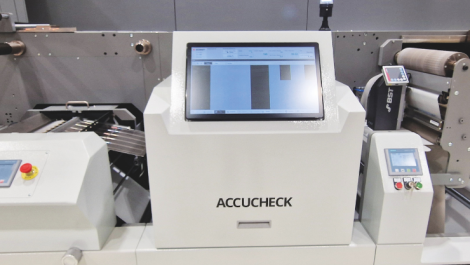Interview with Lucie Tomlin, packaging development manager at Graze. By Des King.
Having led the way towards re-imagining the snacking category for the past 10 years, Graze has recently set about adopting a similar approach to the way in which its 200+ healthy eating products appear in-store, online or within its highly successful subscription box. Gone are the brand’s original hallmark natural tones; very much in are eye-catching vibrant colours and a more contemporary design vibe. With an 8% uplift in sales reported last year and inroads steadily being made into the US market, it is clearly ‘good to graze’.
It certainly is proving to be so for packaging development manager Lucie Tomlin, who joined the ranks of the company’s 500 other employees in February this year, just in time for the roll-out of the snack producer’s new look. She brings a wealth of experience gained with brand owners Mondelez, Iglo Foods and Innocent to her new role, and more recently as a senior technical project manager with the leading packaging design agency Pearlfisher for the past two years.
At the Digital Print for Brand Success conference in 2016, where she joined Iceland Foods’ Ian Schofield to discuss the key trends capturing the digital print for packaging market, she enthused, ‘I feel reinvigorated to what we can do with digital.’ As Lucie Tomlin and Graze’s journey continues, DL&P finds out how far it may take them.
Catering to individual/local preferences is at the heart of the Graze business model. What challenges does that pose for your packaging?
Graze started out with a direct-to-consumer stream 10 years ago. Having gained confidence through that operation we then launched into retail, and the way in which that business has progressed since feels largely due to the strong connection we had already established with consumers. Apart from online and retail obviously each having differing demands, they are not handled any differently.
For direct to consumer, we operate a subscription model, and in that box consumers influence what they receive depending upon their individual preferences. From this, a bespoke pack is collated and delivered weekly. Alongside that we have got the online shop in which you can order what you like. There is a range of products that we do not stock in-store and are only available online.
With the retail model, the basis is the pack that goes into the subscription box, which is ideal for on-the-go consumption; likewise the bar products and sharing bags are also sold in-store. The subscription model has kind of fed into everything we make and sell; the packaging behind that has a consistency; the punnet that goes in the box is the same as the one that can be bought in-store.
The total offer incorporates around 200 different snack options. We have a very agile approach and we are a very open and lean company employing a small number of people doing a lot incredibly well. With this structure, I feel we have opportunities not challenges.
What print technologies do you mainly use?
The majority (95%) of our packaging is printed flexo by external suppliers. We operate Xerox systems in house that print the nutritional information leaflets included within the subscription boxes that are despatched on a daily basis (we send out on average 1.5 million boxes over each 10-week period). Currently, we print a barcode and some basic product information in single colour to the top web of each punnet in the box, using a thermal transfer Domino coding and marking system.
In deciding to use digital print for your packaging was it necessary for you to introduce new suppliers to your roster?
We went to Denny Bros in Bury St Edmunds, which had just installed the UK’s first Xeikon 3500 with Ice toner capable of maintaining the low temperature necessary for printing onto the pre-coated film that had been specially developed for our sharing bags. That was in 2014-15.
What role does digital play in your overall packaging strategy, and might that expand going forward?
Digital adds flexibility to what we do, how we promote the brand and how we can connect to consumers. It is something that we can choose to use, or else we can use a more conventional print process. I do not believe the whole proposition would fall down if digital print was not out there – but I do feel it is something that can certainly help to support the future growth of the brand.
With the e-commerce side of the business, we have to have more flexibility internally as regards the packaging stocks, shelf-life challenges, etc, so we have to be able to react quickly. Digital print serves that requirement really well.
Developing your technical capability is a key driver in future-proofing your brand and your manufacturing technology; having a piece of inline kit that you could use and that, for example, adds more personalised messaging is certainly something that we could consider. The way that we work here is about delivering something that is new and exciting to the consumer; it is what makes Graze a brand that people go to. Whilst I am focused on the current deliverables that we work to, there is also a future strategy on how we can build and innovate our packaging.
When did you, personally, first become aware of digital print and the benefits it might bring for your sales and marketing?
We started using it during my time with Cadbury’s for mock-up work on some major innovation projects. We also used it quite a bit to support sales and marketing activities. It was not something that we thought about with regard to manufacturing.
Since then the technology has significantly developed in terms of capability and so forth, making it a process that you would be more likely to consider. Similarly, new projects are presenting themselves more readily as being suitable for digital. I think it is an incredibly great technology, and I have been having discussions with our head of innovation engineering about potentially having a piece of inline digital kit here. There are a number of technical challenges around it if we had inline full-colour digital capability, but think what it could it offer. So yes, it is definitely something that we would continue to consider and think about.
How aware are consumers of what digital print can bring to their overall purchasing experience?
Well, there are more brands providing a bespoke service online. Some people really like it; some people are not that fussed. Whilst content customisation has a genuine value, people might question whether it is worth paying to have their name printed on something.
There have been some high profile campaigns over the past couple of years that have been great executions of how the technology can deliver variation in-store, build connections with consumers and so forth; all of that has certainly helped to get digital print out there. However, you do not want to be seen as a brand repeating something that has already been done and everyone knows. You have to approach it in the way that makes sense for your brand.
How do you see the future for digital print for packaging?
It is an evolving technology that is doing incredibly well. It is about taking a risk and using it, isn’t it? If volumes were to reduce and the price of digital print were to reduce likewise then that would be fantastic. The smaller runs that we talk about could increase to slightly larger ones, and then its existing 10-15% share of the overall packaging print market could start growing.






